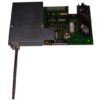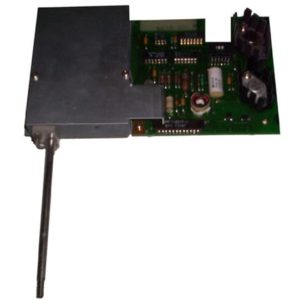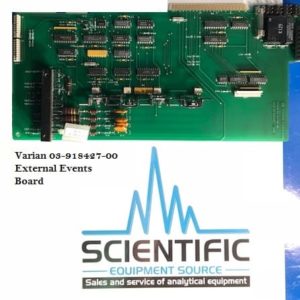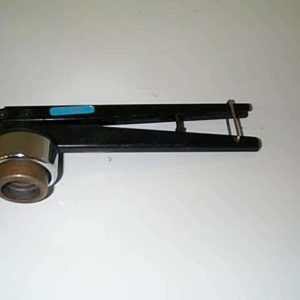GC detector board, HP 5890 TCD
$490.00
GC detector board, HP 5890 TCD
Description
There are many detectors which can be used in gas chromatography. Different detectors will give different types of selectivity. A non-selective detector responds to all compounds except the carrier gas, a selective detector responds to a range of compounds with a common physical or chemical property and a specific detector responds to a single chemical compound. Detectors can also be grouped into concentration dependant detectors and mass flow dependant detectors. The signal from a concentration dependant detector is related to the concentration of solute in the detector, and does not usually destroy the sample Dilution of with make-up gas will lower the detectors response. Mass flow dependant detectors usually destroy the sample, and the signal is related to the rate at which solute molecules enter the detector. The response of a mass flow dependant detector is unaffected by make-up gas.
A number of detectors are used in gas chromatography. The most common are the flame ionization detector (FID) and the thermal conductivity detector (TCD). Both are sensitive to a wide range of components, and both work over a wide range of concentrations. While TCDs are essentially universal and can be used to detect any component other than the carrier gas (as long as their thermal conductivities are different than that of the carrier gas, at detector temperature), FIDs are sensitive primarily to hydrocarbons, and are more sensitive to them than TCD. Both detectors are also quite robust. Since TCD is non-destructive, it can be operated in-series before an FID (destructive), thus providing complementary detection of the same eluents.
Some gas chromatographs are connected to a mass spectrometer which acts as the detector. The combination is known as GC-MS.
| DETECTOR | TYPE | SUPPORT GASES | SELECTIVITY | DETECTABILITY | DYNAMIC RANGE |
|---|---|---|---|---|---|
| Flame ionization (FID) | Mass flow | Hydrogen and air | Most organic cpds. | 100 pg | 107 |
| Thermal conductivity (TCD) | Concentration | Reference | Universal | 1 ng | 107 |
| Electron capture (ECD) | Concentration | Make-up | Halides, nitrates, nitriles, peroxides, anhydrides, organometallics | 50 fg | 105 |
| Nitrogen-phosphorus (NPD) | Mass flow | Hydrogen and air | Nitrogen, phosphorus | 10 pg | 106 |
| Flame photometric (FPD) | Mass flow | Hydrogen and air possibly oxygen | Sulphur, phosphorus, tin, boron, arsenic, germanium, selenium, chromium | 100 pg | 103 |
| Photo-ionization (PID) | Concentration | Make-up | Aliphatics, aromatics, ketones, esters, aldehydes, amines, heterocyclics, organosulphurs, some organometallics | 2 pg | 107 |
| Hall electrolytic conductivity (ElCD) | Mass flow | Hydrogen, oxygen | Halide, nitrogen, nitrosamine, sulphur |







